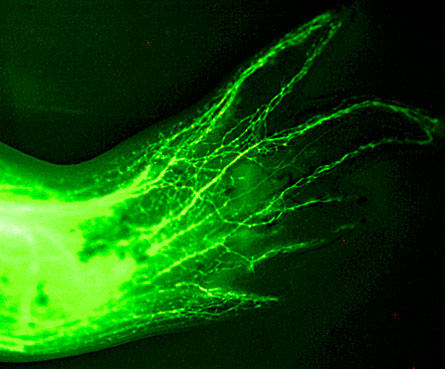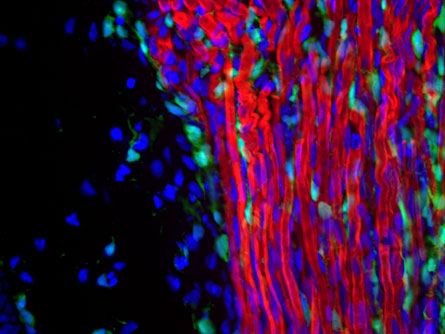- More than 2 years ago
Given a chance to regrow a limb, salamanders don’t change a thing.
Since the 18th century, scientists have puzzled over how salamanders regenerate amputated limbs and have looked for clues to regrow human limbs. Researchers thought they knew part of the answer: Cells at the wound site would lose their identities as they turned back their developmental clocks to become pluripotent stem cells — capable of developing into many cell types in the body — and then recreate the lost limb.
But a new study published July 2 in Nature and led by Elly Tanaka, a developmental biologist at the Center for Regenerative Therapies at the Dresden University of Technology in Germany, shows that cells left behind after amputation retain memories of their identities and proliferate to form the same type of tissue in the replacement limb.
“Definitely it’s putting the conventional wisdom upside-down,” says Alejandro Sánchez Alvarado, a Howard Hughes Medical Institute investigator at the University of Utah in Salt Lake City.
Tanaka and her colleagues genetically engineered a type of salamander called axolotls to make a green fluorescent protein in all cells of the body. This GFP allows the researchers to visually trace the fate of cells during regeneration. The researchers then transplanted muscle, skin, cartilage or nerve tissues from GFP-producing axolotls into embryos that do not make the glowing green protein. Animals that grew from the engineered embryos made GFP only in the transplanted tissues. The researchers then amputated one of the animal’s limbs and watched to see where GFP would appear in the regenerated appendage.
If cells were to become pluripotent before regenerating new limbs, the researchers would have expected to see GFP-producing cells sprinkled throughout the new limbs like salt and pepper, says Sánchez Alvarado.
But the researchers saw that only the tissues that made GFP in the old limb glowed green in the new leg. “It’s clear that the cells that came from muscle only became muscle in the end,” Tanaka says. “We don’t see any evidence of a pluripotent cell.”
Cells in the layer of skin called the dermis were slightly more flexible. Dermal cells could make more dermis or become cartilage, but cartilage, muscle and Schwann cells could not make other types of cells. The researchers also found that the dermis and cartilage played an important role in shaping the limb. “Cells in the cartilage have a very strong sense of identity,” Tanaka says. Those cells seem to remember not only that they are cartilage cells, but whether they came from an upper or lower limb.
The finding could make it easier than previously thought to regenerate human limbs, says Malcolm Maden, a developmental biologist at the University of Florida in Gainesville and a coauthor of the study. “There’s clearly something that the axolotl have that humans haven’t, and that may just be a way of coordinating these cell types,” he says. Still, he doesn’t expect anyone will be able to regrow amputated human limbs in the foreseeable future.
Other animals can also regenerate body parts but may not do it in the same way as axolotls, Sánchez Alvarado says. For instance, newts can regenerate the lens of the eye, but axolotls cannot, perhaps indicating that newts’ tissues have a wider flexibility in how they regenerate. “It will be very important to test the universality of these findings,” he says.








